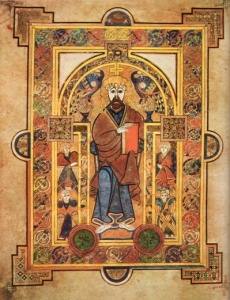 What would cause an old Bapti-costal, house church guy to become an Anglican Priest? That’s the question I’ve been asking myself over the last several months. I thought I might attempt to write a few posts, reflecting on this transition. If you’re interested, read on.
What would cause an old Bapti-costal, house church guy to become an Anglican Priest? That’s the question I’ve been asking myself over the last several months. I thought I might attempt to write a few posts, reflecting on this transition. If you’re interested, read on.
“Friendship is born at that moment when one person says to another: “What! You too? I thought that no one but myself . . .”” C.S. Lewis
My step into the Anglican communion might be described as a step toward friendship. I was not in the middle of search for the “true church.” I was not relentlessly hoping for some affirmation from an ancient tradition to tell me I was important. For several years I had been enjoying house church with a group of friends. Our little house church ate together, prayed together and sought to live out our faith in the midst of the culture around us. I loved and still love our little house church (you can read more about our house church here).
You might say I was “surprised by friendship.” In fall of 2009 and spring of 2010, I was invited to speak to a group of local Anglicans about the Torah from an Old Testament lens and Torah through the lens of Paul. To my surprise, I discovered friends like who shared similar passions, raised similar questions and were longing for the same kingdom come. Over the next several months and years, I spent time with several of these guys, read books with them, and worshipped with them.
Augustine spoke of the kingdom as an ever-expanding community of friends. On earth, this community will always fall short, but it hints at a fullness of community to be revealed one day. Spending time with several of the Anglican ministers tasted of the same sweetness that I enjoyed with my friends in the house church.
I met these gentlemen shortly after our house church had dropped down to meeting only once a week. Since 1999, we had been gathering on Sundays and Wednesdays, and since 2004 we had met in a little storefront recreated into a living room/library atmosphere. Everyone in our church had a key and it was used for all sorts of gatherings: worship, concerts, meals, movie nights, weddings, birthdays and more. It was a little home we all shared.

In February 2008, we suffered a devastating fire, which destroyed our equipment, damaged our books and drove us back into my home. For a variety of reasons, 2008 was a difficult and discouraging year. We decided to quit meeting on Sundays and gather only on Wednesday nights.
During this time my friend Izaak and I began visiting churches in Knoxville and Maryville on Sunday mornings. It gave us an opportunity to experience a range of expressions in the Christian community of our city. After I met with the Anglicans, Izaak and I visited both local Anglican churches: Apostles Anglican and Old North Abbey. We were both “surprised by friendship.”
In fall of 2010, I joined several Anglicans on trip to England. The hospitality of the folks at Holy Trinity Brompton refreshed and surprised me yet again. I discovered Christians from all walks of life (Anglican and Free church) working together to proclaim the kingdom of God in word and action.
I felt at home among “Anglican” folks, but I still loved my house church and still believed in house church as a community where God’s people could learn and practice a way of kingdom living that translated into the community at large. My Anglican friends didn’t see this as a threat but rejoiced in house church. In fact, the spirit of hospitality toward other Christian works and traditions amazed me. I sensed among the Anglicans a heart to affirm expressions of the kingdom of God all throughout the community.
I continued to walk alongside these new friends even as I held to my older friends in house church and other Christian communities. In walking toward Anglicanism, I never felt like I was being called to walk away from other Christians. Instead, I felt the call of communion and the joy of Augustine’s ever-expanding circle of friends.
I think again of C.S. Lewis when he writes, “Christ, who said to the disciples, “Ye have not chosen me, but I have chosen you,” can truly say to every group of Christian friends, “Ye have not chosen one another but I have chosen you for one another.” The friendship is not a reward for our discriminating and good taste in finding one another out. It is the instrument by which God reveals to each of us the beauties of others.”
Lewis and Augustine help me to frame one aspect of my movement toward Anglicanism and sense of call to become an Anglican Priest. I believe that the Father’s call that led me into ministry in the late 80s was a call into serving His people, His children, His every-growing communion of love.* Communion has been a central value among Anglicans since the earliest formation. Yes, it is and has been messy. Augustine saw wrote about the messiness so very long ago. And yet, we are called to press on into love.
In my friendships, I cautiously stepped into communion with the local Anglicans. WIth the discernment of the local and regional communion, I began movement toward priesthood. In the fullness of time, I’ve entered into service under the Bishop of the Diocese of the South. By God’s grace I want to continue extending that hospitality I’ve enjoyed to the friends of God (and soon to be friends of God) all around me.
* More on the journey from the 80s to the present in another post.
